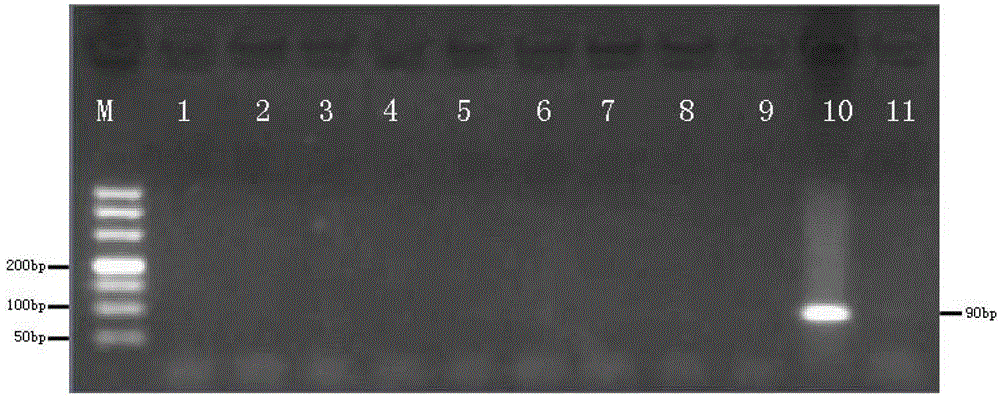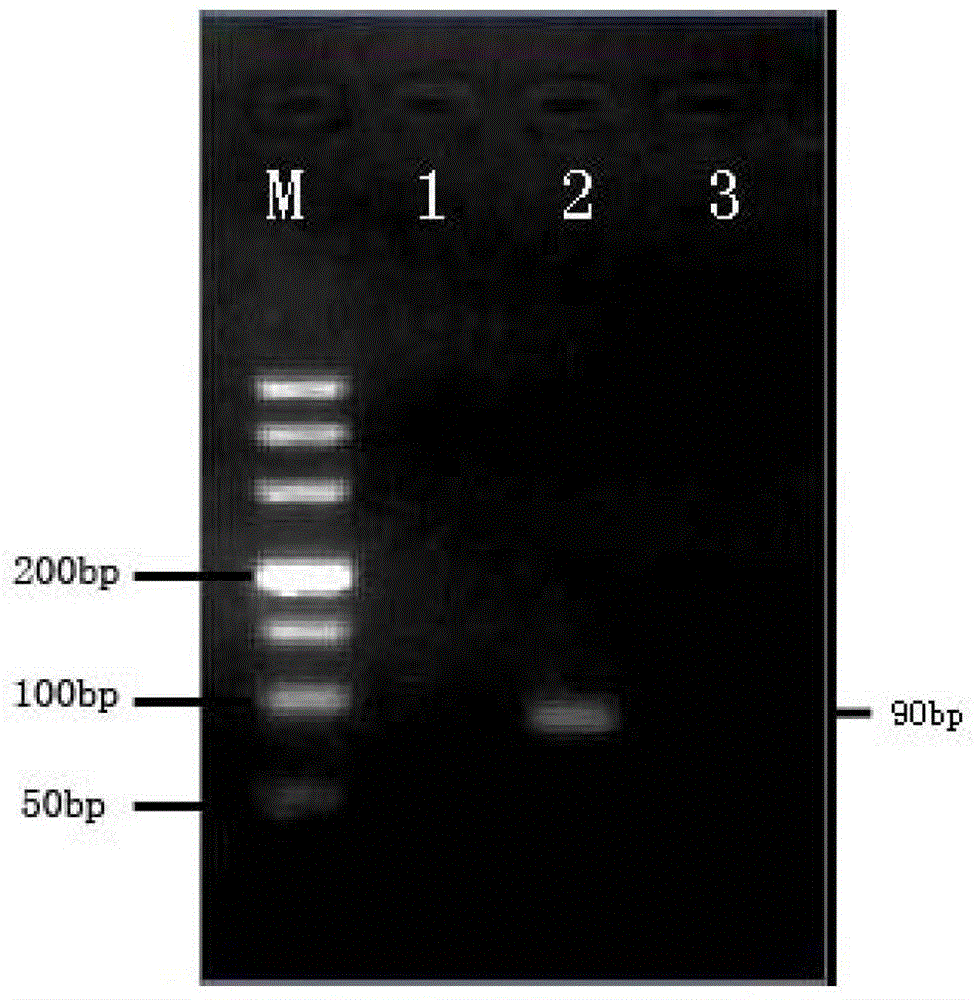Nucleotide mts 90 and use thereof in tuberculosis diagnosis
A technology of nucleotides and uses, applied in the field of molecular biology, can solve the problems of inability to effectively distinguish Mycobacterium africanum and identification of Mycobacterium tuberculosis, achieving high accuracy, high specificity, short time effect
- Summary
- Abstract
- Description
- Claims
- Application Information
AI Technical Summary
Problems solved by technology
Method used
Image
Examples
Embodiment 1
[0051] Example 1 Obtaining of mts90
[0052] After analysis by the bioinformatics software ssGeneFinder, a fragment specifically present in the genomic DNA of Mycobacterium tubercμlosis (Mycobacterium tuberculosis) was found, and it was named mts90 (Mycobacterium tubercμlosis specific sequence 90). / www.ncbi.nlm.nih.gov / BLAST / ) was compared with all microbial genomes, and it was preliminarily determined that it specifically exists in the genomic DNA of human Mycobacterium tuberculosis. In the complete genome of the strain MycobacteriμM tubercμlosis H37Rv (the standard strain of Mycobacterium tuberculosis) (Sequence ID: ref|NC_000962.3|), the position of mts90 is 2980771~2980860, including two parts of the non-coding region and the coding region, The non-coding part is not described, while the coding part is described as part of the coding sequence of the putative protein or integrase (Rv2659c). It has been reported that protein Rv2659c is used as a candidate protein for tuber...
Embodiment 2
[0053] Example 2 Verification of the specificity of mts90 in common microorganisms
[0054] 18 kinds of bacteria and fungi were selected for specificity verification. Reasons for selection: The selected bacteria and fungi are common clinical pathogens, which are most likely to interfere with tuberculosis detection; comprehensive coverage of Gram-positive and negative bacteria, including pathogenic bacteria, conditionally pathogenic Germs, probiotics (Clostridium butyricum), made the results more convincing. The specific experimental process is as follows:
[0055] Extract DNA templates of various strains by boiling method (TIANamp Bacteria DNA Kit, DP302): Take 100 μl TE buffer solution in a 1.5 μl EP tube, pick a small amount of well-growing colonies in the tube, boil in 100°C water for 20 minutes, and then immediately Place on ice for 10min. Centrifuge at 1,3000g for 2min, take the supernatant into a new 1.5μl EP tube, use it as a DNA template for PCR amplification, and st...
Embodiment 3
[0059] Example 3 Verification of the specificity of mts90 within the genus Mycobacterium
[0060] Using mycobacterial DNA as a template (the mycobacterial template used was donated by the China Institute for Food and Drug Control) to verify the specificity of mycobacteria
[0061] Boiling method to extract DNA templates of various strains: Take 100 μl TE buffer in a 1.5EP tube, pick a small amount of well-growth colonies in the tube, boil in 100°C water for 20 minutes, and then immediately place it on ice for 10 minutes. Centrifuge at 1,3000g for 2min, take the supernatant into a new 1.5μl EP tube, use it as a DNA template for PCR amplification, and store at -20°C.
[0062] The PCR amplification system, amplification primers and conditions are the same as in Example 2. PCR products were electrophoresed on a 2.5% agarose gel and imaged with a gel imager, such as figure 2 shown. The results showed that, except for human-type Mycobacterium tuberculosis H37RV, there was no mts...
PUM
 Login to View More
Login to View More Abstract
Description
Claims
Application Information
 Login to View More
Login to View More - R&D
- Intellectual Property
- Life Sciences
- Materials
- Tech Scout
- Unparalleled Data Quality
- Higher Quality Content
- 60% Fewer Hallucinations
Browse by: Latest US Patents, China's latest patents, Technical Efficacy Thesaurus, Application Domain, Technology Topic, Popular Technical Reports.
© 2025 PatSnap. All rights reserved.Legal|Privacy policy|Modern Slavery Act Transparency Statement|Sitemap|About US| Contact US: help@patsnap.com



